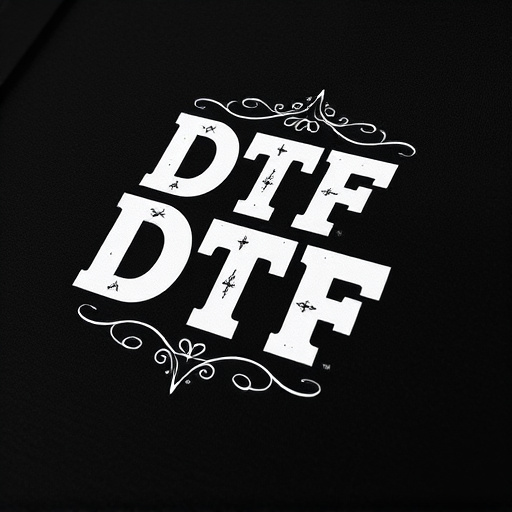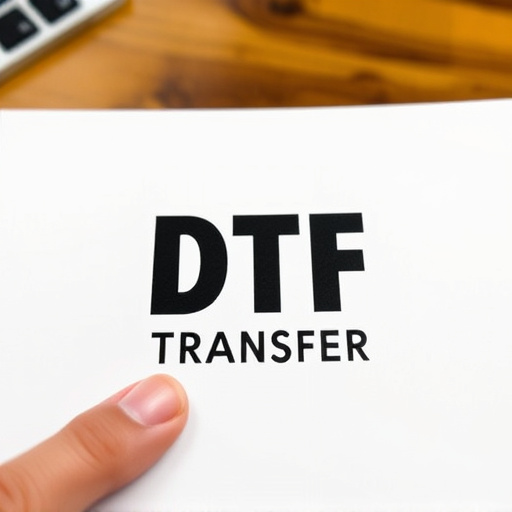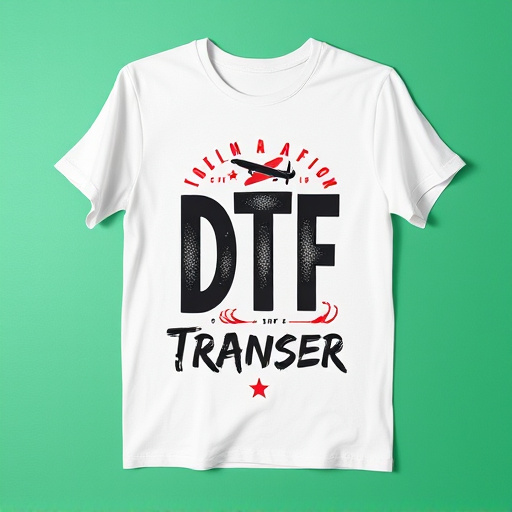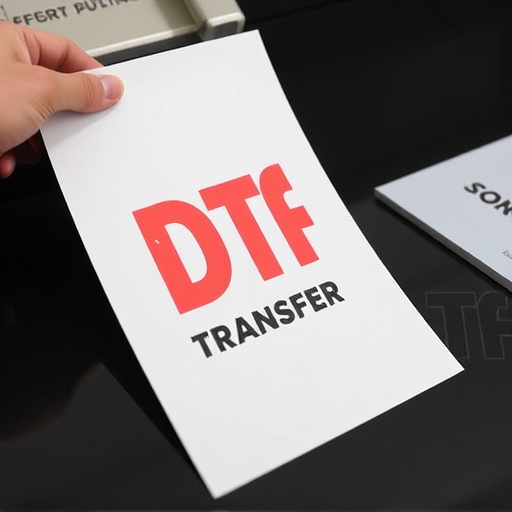Direct-to-Film (DTF) transfer technology offers superior durability for prints on diverse surfaces compared to traditional methods. Key factors influencing longevity include high-resolution prints, suitable DTF films, environmental conditions, and careful handling. Contrary to beliefs, with proper application and care, DTF transfers can withstand outdoor elements and maintain vibrancy over extended periods. Regular cleaning and storage in cool, dry areas further enhance durability. The future of DTF printing looks promising with technology advancements focusing on increased resistance to fading and damage. This cost-effective solution is gaining popularity across various industries for its longevity and versatility.
Direct-to-film (DTF) transfer technology has revolutionized printing, offering vibrant, long-lasting images on various surfaces. This article delves into the durability of DTF transfers, exploring key factors that influence their lifespan and busting common misconceptions. From understanding the technology to maintaining your prints, we provide insights for both professionals and enthusiasts. Discover real-world applications and learn about future innovations in DTF printing, ensuring your creations endure for years to come.
- Understanding Direct-to-Film (DTF) Transfer Technology
- Key Factors Influencing DTF Transfer Lifespan
- Common Misconceptions About DTF Prints Durability
- Real-World Applications and Longevity of DTF Transfers
- Maintaining and Extending the Life of Your DTF Prints
- Future Prospects: Innovations in DTF Printing Durability
Understanding Direct-to-Film (DTF) Transfer Technology

Direct-to-Film (DTF) transfer technology has revolutionized printing and imaging, offering a unique and efficient method for creating durable prints directly on various surfaces. This process involves applying a special ink or coating to the target material, which is then cured using UV light, resulting in vibrant and long-lasting images. DTF Transfer is particularly renowned for its versatility, applicable to a wide range of materials, from vinyl and canvas to metal and wood.
The key advantage of DTF lies in its ability to provide high-quality prints with exceptional durability. Unlike traditional printing methods that might fade or peel over time, DTF prints are designed to resist fading, scratching, and water damage, ensuring their longevity. This makes DTF an ideal choice for applications requiring long-lasting visuals, such as outdoor signage, vehicle wraps, and decorative wall art, where the prints need to endure varying weather conditions and daily exposure.
Key Factors Influencing DTF Transfer Lifespan

Several key factors significantly influence the lifespan of Direct-to-Film (DTF) transfers. Firstly, the quality of the initial print or image plays a critical role; high-resolution and crisp prints tend to produce more durable DTF transfers. Additionally, the type of film used is crucial; specialized DTF films designed for longevity offer better protection against fading and damage compared to standard printing papers.
Environmental conditions also matter greatly. Exposure to excessive heat, direct sunlight, or moisture can accelerate the degradation of DTF prints. Proper storage in cool, dry places extends their lifespan substantially. Moreover, the handling process is another critical aspect; careful manipulation during application and removal minimizes the risk of tearing or smudging that could compromise the transfer’s longevity.
Common Misconceptions About DTF Prints Durability

Many people hold misconceptions about the durability of Direct-to-Film (DTF) transfers and prints. One common belief is that DTF prints are less durable than traditional printing methods, often assuming they will fade or peel quickly. This couldn’t be further from the truth; DTF transfers offer exceptional longevity when properly applied and maintained. The perception might arise from the fact that DTF prints are more accessible and popular for personal use, leading to a belief in their inferior quality.
Another misconception is that DTF Transfers are not suitable for outdoor applications or long-term displays. However, with the right materials and application techniques, these prints can withstand exposure to sunlight, varying weather conditions, and even touch. The durability of a DTF transfer depends on factors like ink quality, substrate choice, and installation method. Understanding these aspects empowers users to make informed choices, ensuring their DTF prints last for years, preserving the intended message or aesthetic appeal.
Real-World Applications and Longevity of DTF Transfers

In real-world applications, Direct-to-Film (DTF) transfers have proven their durability and longevity in various industries. From outdoor signage and wayfinding to event branding and temporary murals, DTF prints have shown remarkable resistance to weathering, making them a preferred choice for businesses seeking long-lasting visuals. The direct application of ink onto film allows for a seamless bond, resulting in vibrant colors and sharp details that remain intact even under harsh environmental conditions.
This durability is particularly advantageous for outdoor advertising and marketing campaigns where prints are exposed to sun, rain, and wind. DTF transfers offer a cost-effective solution for temporary installations while ensuring visual impact. Moreover, their longevity means less frequent replacements, reducing maintenance costs over time. In addition, the versatility of DTF printing allows for easy updates and changes to designs, making it a flexible option for businesses that need to adapt quickly to market trends or promotional needs.
Maintaining and Extending the Life of Your DTF Prints

Maintaining and extending the lifespan of your direct-to-film (DTF) prints is essential to ensure their longevity and vibrancy. Regular cleaning is a crucial step; use a soft cloth or brush to gently wipe away any dust, dirt, or smudges from the print surface. Avoid aggressive scrubbing as it can damage the delicate film layer. Additionally, store your DTF prints in a cool, dry place, away from direct sunlight and heat sources, to prevent fading and deterioration.
Another effective method is to apply protective coatings designed specifically for DTF transfers. These coatings create a barrier between the print and potential environmental contaminants, enhancing its resistance to fading, scratching, and smudging. By following these simple care instructions and utilizing appropriate protective measures, you can significantly extend the lifespan of your DTF prints, ensuring they remain vibrant and intact for years to come.
Future Prospects: Innovations in DTF Printing Durability

The future of direct-to-film (DTF) transfers looks promising as technology continues to evolve. Innovations in DTF printing durability are pushing the boundaries, offering longer-lasting and more vibrant prints. Researchers and manufacturers are exploring advanced materials and production techniques to enhance the longevity of these transfers. This includes developing formulations that resist fading, cracking, and peeling over time, ensuring that DTF prints maintain their quality for extended periods.
With the increasing demand for durable and high-quality graphics, DTF technology is poised to play a significant role in various industries. From fashion and textiles to signage and automotive applications, the market is witnessing a shift towards long-lasting solutions. As advancements continue, we can expect to see more robust DTF transfers, providing businesses and consumers with an economical and efficient option for permanent or semi-permanent markings that withstand the test of time and environmental factors.














